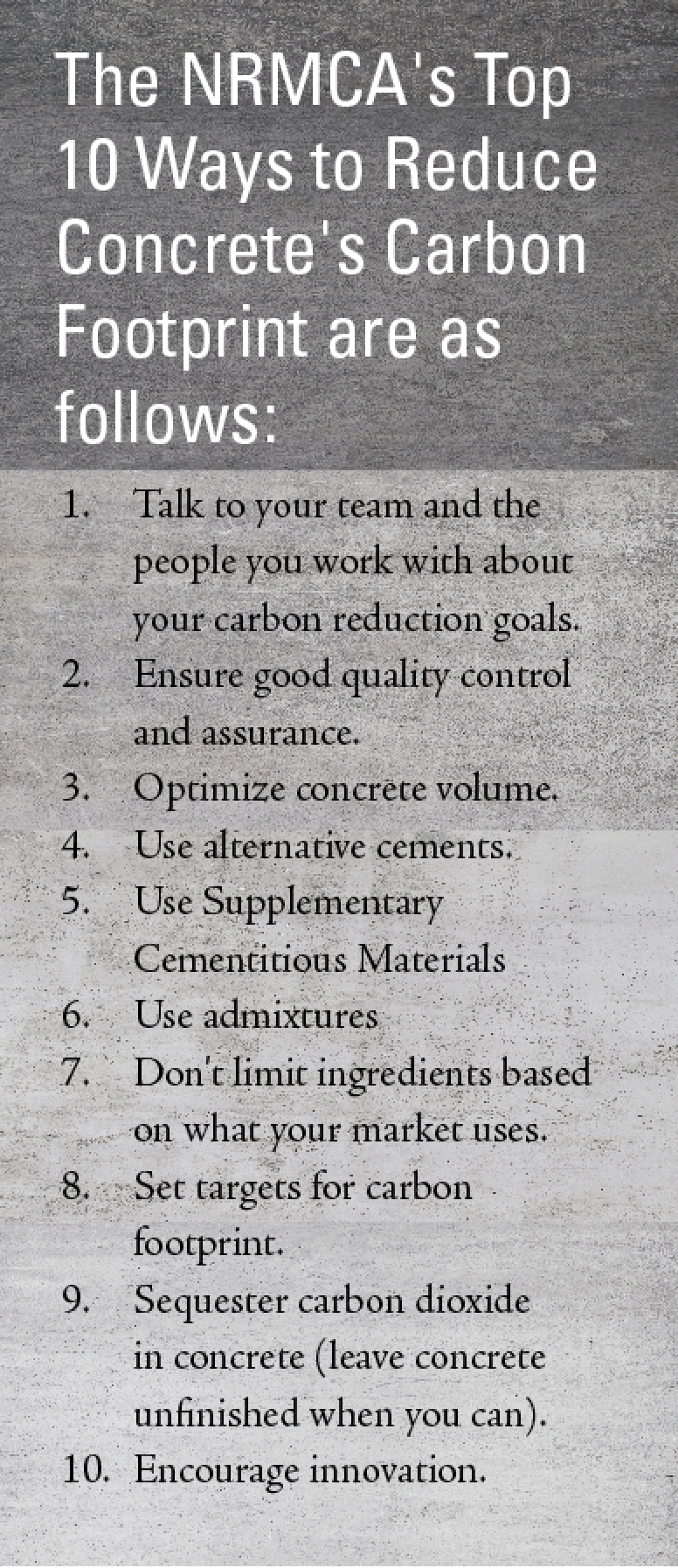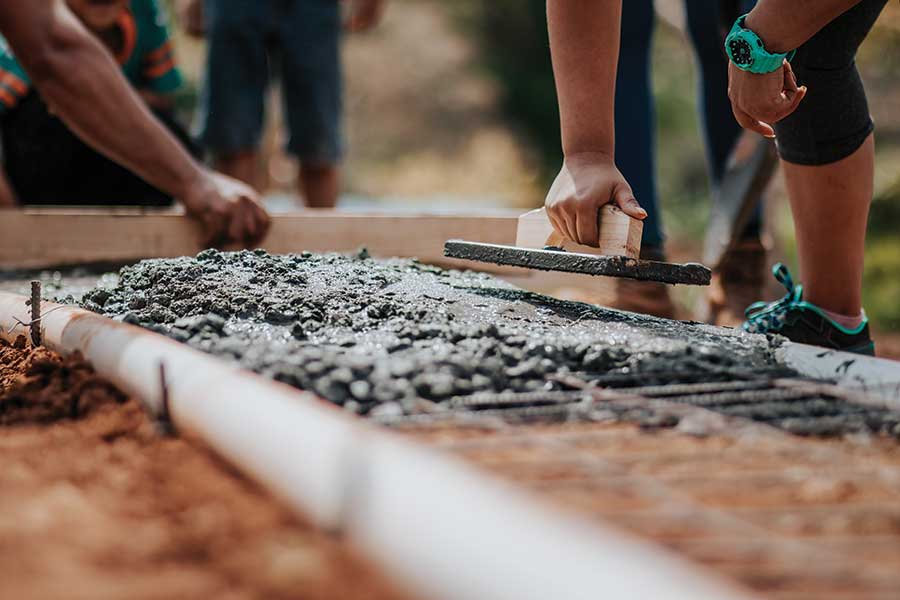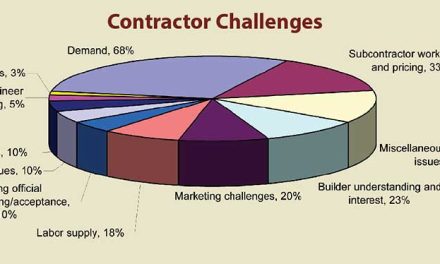By Vanessa Salvia
Concrete is the most widely used man-made material in existence and the most common building material in the world.
It is consumed at a rate second only to water. With global construction rates predicted to rise by 35% by 2030 (according to September 2020 research by Independent Commodity Intelligence Services), the carbon footprint of concrete is going to be an even more important factor in
the future. Cement has a relatively large carbon footprint due to the manufacturing process, which requires high heat and the release of carbon dioxide during the chemical reaction called calcination. Cement is the source of about 8% of the world’s carbon dioxide (CO2) emissions, according to think tank Chatham House. While that might not seem like much, if that were the output of a single country, it would be the third largest behind China and the US.

“We ran a benchmark in 2014 and then periodically we measure that against our progress,” explains Lionel Lemay, the NRMCA’s executive vice president of structures and sustainability. “We did demonstrate a 13% reduction in 2019.” Another benchmark will be taken in 2021, and Lemay thinks they will add another 10% reduction. “So a 23% reduction since 2014, and we need to reach 50% by 2030. So we’re challenged there. But our message, to architects especially, is that we are making a significant effort in trying to reduce our footprint.”
Some things you can do include improving quality control and using efficient mixes. “For example, going from 1200 PSI to 600 PSI over-design, by improving quality control and assurance procedures would likely result in 60 pounds less cementitious material per cubic yard, potentially an 8% decrease in embodied CO2,” explains Lemay.
An excellent strategy for reducing the carbon footprint of a building is using life cycle analysis software to quickly calculate the embodied carbon of concrete elements. Leaving concrete exposed and unfinished, where possible, also helps because concrete absorbs carbon over time through a process called carbonation. Using blended cements, admixtures, and supplementary cementitious materials also helps. The Portland Cement Association says that portland-limestone cement, which is a blended cement with higher limestone content, reduces the carbon footprint by 10% with no loss in performance. Effective admixtures can reduce water content in a mixture, which will result in a reduction of cement content.
In addition to these basic steps, researchers around the world are working to make concrete greener. Industry technology and engineering experts from Boral, the University of Technology Sydney (UTS), and Southern Highland Concrete Constructions are developing ultra-sustainable low-carbon concrete in Australia. Their product, known as Envisia, is said to perform as well as conventional concrete while containing a sizable cement replacement.
The most effective methods to reducing carbon footprint is to replace some of the portland cement with supplementary cementitious materials (SCMs) such as ground granulated blast-furnace slag and fly ash. These waste byproducts combine with ordinary portland cement to improve strength and durability. Replacement can range from 20-70% and sometimes more depending on the application. Replacement can be relatively high in ICFs because of the ideal curing conditions. Fly ash is not as abundant as it once was, in part due to coal plants being retired. Slag is less abundant also, due to the decline of steel production. All of this makes alternative concrete mixes more challenging, but the industry is working to develop additional sources of SCMs.
Another way to make concrete more green is to turn demolition waste into new concrete. French company Keey Aerogel is extracting silica from waste concrete to produce aerogel thermal insulation at around half the cost of using new silica. An Italian team found that concrete can perform just as well if three-quarters of its content has been recycled. Europe has increased the use of waste concrete in road bases and backfills. Using the concrete again, though, is a less common practice.
A recycling process innovated by the VEEP Project (www.veep-project.eu) involves removing steel from waste concrete with magnets, crushing the waste, breaking up aggregate and finer particles, then burning off contaminants such as wood and plastics. This produces two clean streams—a fine powder and a fine aggregate. The powder can substitute for up to a tenth of the cement in concrete. The fine and coarse aggregates can replace sand and gravel almost completely. Recycled post-consumer glass, when it is crushed into a powder known as ground-glass pozzolan, can be used in place of some of the cement in concrete.
In 2020, Swiss company LafargeHolcim added a concrete mix that lowers carbon 30% to its standard menu. But the concrete does cost more. Yes, green concrete can be more expensive, but with the world fighting toward a common goal of preventing climate change and the need for cement continuing to grow, each small step counts.
“Each step you take is additive, they’re not mutually exclusive,” says Lemay. “You can do all of these things together and reduce carbon footprint and still get all the benefits of concrete such as energy efficiency, resilience, and fire safety.”
Watch Lionel Lemay’s presentation on “The Top 10 Ways to Reduce Concrete’s Carbon Footprint” on YouTube at: https://www.youtube.com/watch?v=SpqGxmu_KIc













